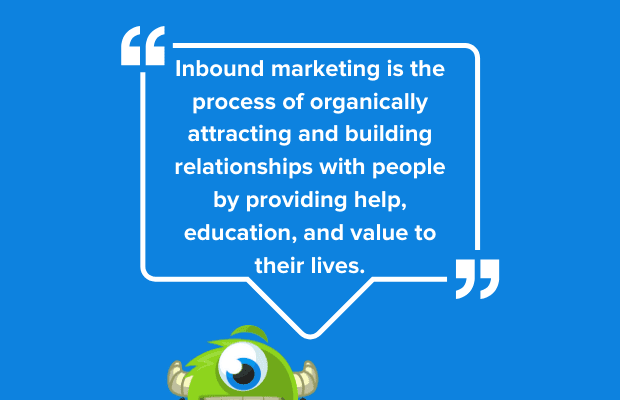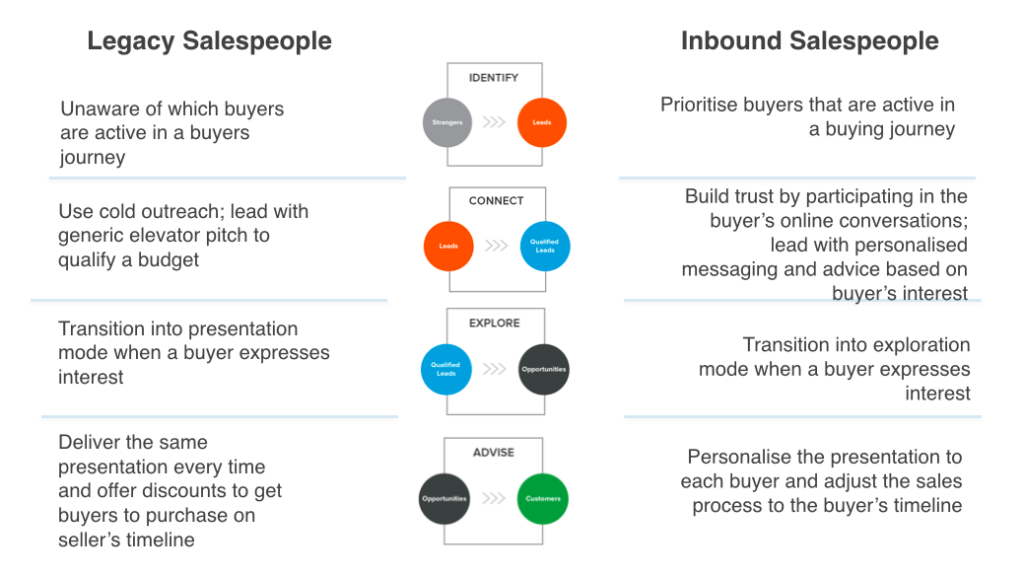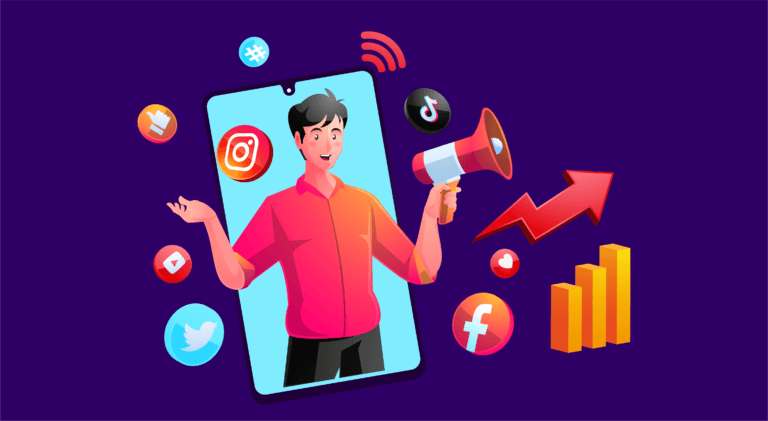
Table of Contents
- What Is Inbound Marketing?
- Types of Inbound Marketing Strategies
- Why Is Inbound Marketing Important to Boost sales?
- 7 Tips to Increase Sales Through Inbound Marketing
- Key Takeaways
- Conclusion
- FAQs
We often hear that content is king. If your content can convey your expertise and create some value for people, they will come to you of their own accord. Do you know of a sure-shot way of ensuring that they’re interested in what you have to say and offer? Create value for your existing and prospective customers, and show them that you want them to succeed.

This way, they’ll stay with you for a longer period—at least, as long as they derive value from your advice, guidance, and resources. Your brand or business can then easily leverage this to form a conversion strategy. With inbound marketing, one of the best tips to improve sales is to not sell at all. Why not land your clients and customers in a way that keeps them around for longer and because they want to, rather than being talked into it? Let’s explore in detail how you can form lasting relationships with your customers using inbound marketing.
What Is Inbound Marketing?
When you think about growing your organization or business, there are multiple options available to you. You can either push your messaging and products on to the customers, or you can create value for them so that they walk towards you with curiosity. The latter approach is what inbound marketing is all about.
As the name suggests, inbound marketing attracts customers to your product or website, by providing them with the information they need, at the exact moment that they need it the most. This creates immense value for the customers and doesn’t involve any aggressive advertising. If you’re looking for ways to increase sales, inbound marketing practices can help you achieve them meaningfully.
In inbound marketing, your efforts will be focused on gaining online traffic, user engagement, sales, and customer loyalty. Customers and prospects will view your content as valuable, because the information you share will help them find solutions to their problems. If you empower your customers with solid information, they will trust you for advice on related matters. Once this trust is established, you need to nurture this relationship in an ongoing manner. This way, one day, when the customer is in need of the product, they won’t think of going anywhere else for it.
Types of Inbound Marketing Strategies
In the process of reaching customers, inbound marketing seeks to attract them, engage with them, and keep them around. This is done using the strategies mentioned below.
1. Attraction strategies
The first step is to attract your target customers and spark a conversation with them. You can do this through powerful content like blogs, guides, white papers, and social media. The underlying idea is to establish yourself as the authoritative voice in the industry or niche. This leads the customers to believe in you as the trusted advisor for all their needs.
You can also share how-to guides about your products or services, explain how you provide solutions for the challenges they face, support these with customer testimonials, and excite them with details about promotions or discounts. You must also optimize the content you create with an SEO strategy that helps you rank high on search engine results pages (SERP). This is an important marketing tip to increase sales.
2. Engagement strategies
One of the best ways to improve sales performance for business is to engage with the audience. Do not think of inbound marketing as an isolated exercise in sales, but rather as a holistic effort at long-term relationship-building. During your conversations, you can share information about how your product or business can make the user’s life easier.
At a later stage, you should also consider how you can make sales calls a part of your engagement strategy. A tip to improve sales: your sales call should not pitch the product, but a solution. What do we mean by that? Let’s say you’re selling scheduling software for social media managers. Instead of pitching the price or features of your tool alone, show your potential customers how it makes their lives easier. This will bring you happy customers who won’t need convincing about the product at every step or renewal cycle.
3. Delighting strategies
One of the best tips to improve sales is that you should follow up with customers to ensure a continued positive experience for them. There are a plethora of ways you can do this: from using well-timed chatbots to intuitive surveys that capture real-time sentiments, and social media listening to recording customer feedback and experience. This will give you insights into both the customer’s pain points and the merits of your offer.
Delighting inbound strategies ensure customers are happy, satisfied, and supported long after they make a purchase. These strategies mean your team members become advisors and experts, who assist customers at any point in time.
The importance of inbound marketing at this stage is showing the customer that you’re readily available to serve them, and will keep empowering them with the best information, in the hope that the customer also becomes a brand advocate someday.
Why Is Inbound Marketing Important to Boost Sales?
There’s no gainsaying that lead generation is one of the topmost priorities of inbound marketers everywhere.

Source: HubSpot
You might tell yourself, “Inbound marketing feels like such a long-winded way of capturing customers, when I can use outbound techniques to generate and convert leads much faster.” However, the importance of inbound marketing doesn’t stop at lead generation. There are many more reasons why inbound marketing is so crucial to boost sales.
If you put on your thinking hat, you will find that the leads generated through a long-term relationship are higher than the leads that ads will bring. This means, the customer who sees your value over a long period of time will need less convincing to start paying for your product or service when the time comes. In fact, according to a Databox survey, inbound strategies like SEO are more efficient at generating sales than outbound marketing.
Secondly, the content produced as part of your inbound marketing strategy is perpetually working to generate leads for you and grab eyeballs. Unlike an ad that only runs till you’re paying for it, you can reap the benefits of inbound marketing material forever. It massively boosts your return on investment, as well as your organic search credibility.
7 Tips to Increase Sales Through Inbound Marketing
Now, if the goal of inbound marketing is to generate steady leads that convert into sales, your strategy should reflect that in its goals. At the same time, it is important to fully understand the customers or users and their desires. Here are seven tips to improve sales through your inbound marketing efforts.
1. Set actionable goals
What are the most important goals your inbound marketing is aiming to achieve? These goals can range from brand awareness and lead generation to revenue boost or a combination of these. You should set out goals and milestones in order of priority, and set the action plan in accordance with these goals.
Without goals, it’s impossible to test the efficiency of your inbound marketing efforts. Within these goals is always a sales goal. Make sure your sales goals adhere to the SMART framework. SMART is an acronym for specific, measurable, attainable, relevant, and timely. Let’s explore each in a little more detail.
Specific: your goal should specify detailed numbers or outcomes.
Measurable: There should be a way to measure the growth you are achieving.
Attainable: The goals should be realistic and practical. Don’t set lofty, unreasonable, or ambiguous goals like increasing revenue by 100x.
Relevant: The goals you set in terms of sales or leads should be relevant to the business.
Timely: Have a deadline in place for the goals. This way, you can also review how well your inbound marketing strategy is performing from time to time. Keep in mind that inbound marketing strategies will take some time to pay off.
2. Research your customers and their needs
Empathy is at the core of how inbound marketing works. You are essentially saying to your customers, “We care for you. We see you’re facing this challenge, so here are some resources to help you out of the problem.” These could be resources you create for free, so that your customers can see how much you care for them and the efforts you are putting in to elevate their experience.
You can also use keyword research tools to find out what your prospects or customers are searching for, the trending terms in your industry, and other insights. You can also talk directly to your customers and get firsthand information on the challenges they are facing, the solutions they are looking for, and their pain points in the current versions of the product or service.
Ask them about their problems, then take some time to create answers and solutions for them. It is these solutions and answers that will form a big chunk of your content strategy and pull the customers to you.

This is why engaging with your customers is key: getting traffic or followers can be a vain metric if you are not able to keep the customers around for long enough.
3. Establish a team for value creation
Most of the value you create for customers through content will require specialists who can turn technical issues and jargon into bite-sized, easy-to-understand solutions. For content creation, you need a dedicated team to organize your inbound marketing efforts. Depending on your budget, level of expertise you require, timelines, etc., you might want to consider choosing from among an agency, a freelancer, or an internal content team.
The people who write or create the content need to understand the nuances of your product, as well as be experts in creating a value proposition for your audience. In other words, they should have a knack for communication, along with rigor for accurate information dissemination. You should also consider hiring for creative skills, like video editing, graphic design, UX design, etc.
4. Create a content strategy
You have your goals in place, you’ve done research, and you have a team to make it happen. The next obvious step is to strategize: decide how you will make your content valuable for your target audience. This is the process of actual content creation. What and how should the content be presented so that it attracts and engages your prospects?
This will involve creating content, deciding the mode of content (audio, visual, textual), platforms for content promotion, and repurposing and updating the content for future use. Develop a clear path for the content, right from brainstorming to publication and promotion. Pro-tip: develop a content calendar and share it with the team, so everyone knows the timelines and their role in each project.
5. Share your content
After content creation, the distribution of content is another key decision. You can share your content at different touch-points, where potential customers are likely to meet you. You can share small snippets from a podcast or a long-form piece of content on your social media channels.
You can also leverage a strong SEO strategy to attract customers to your content. For example, if your product is a document-signing software, you can publish a blog titled “Everything you need to know about electronic signatures”, and everyone learning about securely signing documents online will come to your blog. They will come to you for information, and hopefully, stay around for the product.
6. Engage with your audience
A crucial part of linking inbound marketing to sales is sustaining and nurturing the relationship with your customers, prospects, and leads. Once you’ve grabbed the eyeballs of potential customers, you need to hold their attention and interest long enough to take it to the next level. You can use emails to follow up with them or share more useful content through newsletters, social media, and reports. You can also make use of marketing automation tools to do this intelligently.
Either way, it is important to listen to what the customers and prospects are saying about your resources and your product, respond to them in a timely fashion, engage with them through surveys, live webinars, Q&As, etc. Keep your brand on their radar so that your product becomes an obvious choice for them when they make the decision to purchase.
7. Assess and review your goals
No marketing effort is complete unless you look back and ask yourself, “What went well? What could be done better?” Track how your content pieces are performing, and determine if there are certain formats or platforms that are more popular than the others. Use this knowledge to optimize content creation and delivery in the next cycle.
Remember that inbound marketing efforts are based on an exercise of trust-building, and that takes time. So, make sure you adjust your assessment and evaluation metrics accordingly. It’s a game that pays off in the long run. This is one of the greatest marketing tips to increase sales.
Key Takeaways
- Inbound Marketing is a method of engaging with people to build long-term trust with them, with the hope of converting them into paying customers.
- The strategy aims to attract customers’ attention, build relationships with them, and delight them with value addition.
- Make sure you have creative talent on your team to help execute your inbound content plans.
- Create SMART goals for your inbound strategy.
Conclusion
Marketers around the world are starting to realize the importance of inbound marketing. In a nutshell, inbound marketing uses content and other marketing pulls to add value to people’s lives and develop lasting relationships. These people see the value you are creating for them, so they convert into long-term, paying customers.

FAQs
Some examples of popular inbound marketing content are blog posts, web pages, ebooks, live and recorded webinars and podcasts, email newsletters, and social media content. You can also create guides, video tutorials, and online workshops.
Inbound marketing involves the creation and publication of content, optimizing it with various algorithms, and building credibility. Thus, it is a long-term effort. It will take some time for the marketing efforts to pay off in terms of trust-building, lead generation, and conversion. However, the leads converted after prolonged relationship-building will stick around for longer than those that come from paid ads.
Content marketing falls under the bigger umbrella of inbound marketing. Inbound marketing works on attracting, nurturing, converting, and delighting customers. Content marketing does so using content in various forms: tutorials, blogs, white papers, ebooks, workbooks, etc. Content marketing is a core strategy of inbound marketing.
A blog post is an example of inbound marketing. If a productivity software company publishes a blog post about different productivity techniques, such as time blocking, it’s an example of inbound marketing, because it informs and engages the target customer without making it solely a sales pitch.
Yes, SEO helps in improving organic traffic from SERPs. When your prospects are searching for information related to your service, a strong SEO strategy will help you present yourself as thought leaders in the industry. The importance of inbound marketing is in getting this attention and holding it for a long time.
Latest Blogs
Explore how Google’s 2025 AI search updates triggered ranking chaos. Learn actionable strategies to adapt your SEO for AI Overviews, zero-click searches, and SERP volatility. Stay ahead now.
Learn how to rank on AI search engines like ChatGPT, Perplexity, and Gemini by optimizing your content for authority, structure, and relevance. Stay ahead in AI-driven search with this strategic guide.
Explore the best healthcare SEO services for your medical practice. Improve online visibility and effectively reach more patients in need of your services.


